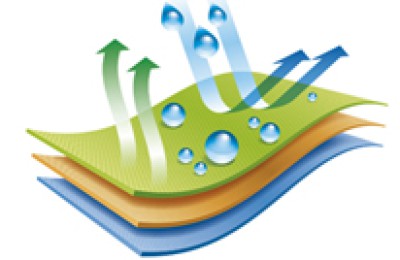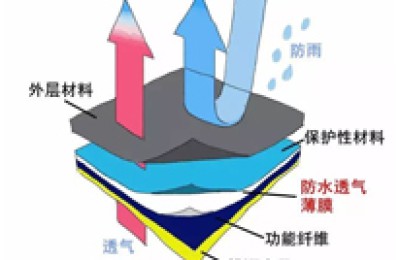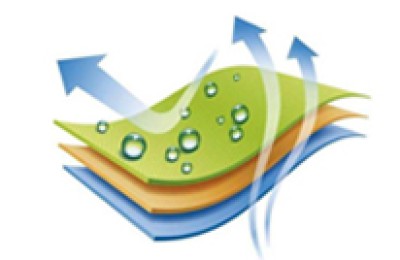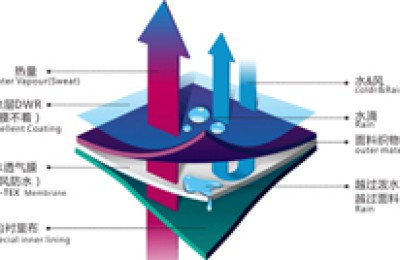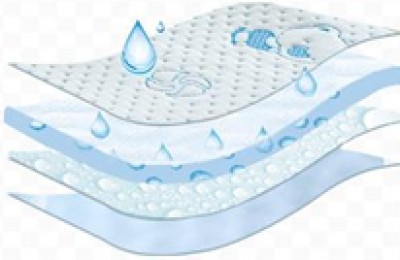Common problems in the combing process include poor cotton webs, holes, poor joints, etc., which have a great impact on product quality and are key issues that the relevant technical personnel of textile enterprises pay attention to.
Poor edges of cotton webs
Poor edges of cotton webs include burrs, loose edges, broken edges, Phenomenons such as skirts, holes in the cotton mesh, and poor joints of the cotton mesh directly affect the quality of combed semi-finished products and should be strictly prevented.
01 Phenomenon
Both sides of the cotton web output from the separation roller are not smooth, uneven, and the cotton web Some of the cotton fibers at the edges are messed up by the cotton collecting hook tips and become spider-like broken edges; some edges have an obvious vertical sparse path; some cotton web edges are wrinkled like a skirt when exported; some There are periodic curled fiber bundles at the edges. In severe cases, the edges of the cotton web will become smaller and narrower. This phenomenon directly affects the uneven dryness and uneven weight of the cotton slivers on the car surface.
02 Cause Analysis
1) The gap between the front edge of the nipper plate cotton collector and the upper nipper lip is too large , causing the cotton layer to be in the shape of a beard after the upper and lower nippers are engaged. Since the fibers on both sides of the beard are loose, it is easy to cause defects in the edges of the cotton mesh after being combed by the cylinder comb needle.
2) The installation position of the cotton collecting hook of the separation roller is inaccurate. When the installation is too low, the tip of the cotton collecting hook will puncture the cotton net, or even divide the cotton net into a line, and the cotton net will be collected. If the cotton hook opening is too wide or too narrow, it will affect the edge of the cotton net. If the opening is too wide, it will not be able to collect and extract, and the edges of the cotton mesh will be loose and the hair will be broken. If the opening is too narrow, the cotton mesh will overlap and thicken at the edges of the cotton mesh.
3) The temperature and humidity in the workshop are inappropriate, especially when the humidity is higher than 70% or lower than 55%, the rubber rollers or rollers will easily lift up the edges of the cotton web, causing the cotton web to The edge deteriorates severely, and even rubber rollers or separation rollers are produced.
4) When processing short fibers on a high-speed machine, the separation rubber roller cannot hold the grip or the separation roller bridge gear is loose, causing the two sides of the cotton web to be on both sides. The root separation roller will sag in the middle.
5) There is a small amount of entanglement on both sides of the rubber roller or roller, which causes the separation jaws to hold the cotton web poorly and causes broken edges.
6) The short raw cotton fibers and poor control of the triangular airflow plate can easily cause loose edges of the cotton net.
03 Maintenance method
1) When using a large or small flat car, the clamping plate cotton collector The leading edge should be as close as possible to the inside of the upper pliers lip.
2) The cotton collecting hook of the separation roller should be installed according to regulations, and the height should be consistent with the opening. The surface of the cotton collecting hook should be kept smooth and free of burrs and cotton wax.
3) The temperature and humidity of the workshop must be strictly controlled.
4) The pressure on the separating rubber roller should be increased on the high-speed machine to ensure good grip on the separated beards.
5) Check whether there is any tangle on both sides of the separation roller or rubber roller.
6) The separation roller bridge gear and the front and rear separation roller head gears are properly meshed with each other, and the front and rear tightness are consistent; after calibration, the countershaft handwheel should be slightly rotated counterclockwise to make the The detaching roller can synchronize reverse and reverse rotation to normal.
7) For short fibers, you can appropriately reduce the opening of the nipper plate and cotton collector, and slightly loosen the triangular airflow plate by 0.5 mm, which can solve some loose edges.
Holes in the cotton web
Holes in the cotton web are horizontal unevenness in the cotton web. Cotton nets with holes have a major impact on the uneven dryness and weight of cotton slivers on the car surface. If such phenomena occur during production, the machine should be shut down immediately for maintenance.
01 Phenomenon
When the separation cotton web is conveyed from the separation jaws, it has a cat-eye shape. Holes of various sizes. Some cotton mesh holes are quite regular and appear in every clamping cycle; some are basically at the same position in terms of the location of the rupture; some are irregular and only appear occasionally.
The appearance of the broken cotton mesh will become hairy, wrinkled or have obvious uneven thickness and other undesirable conditions. If you twist a cotton sliver with your hands, you can immediately detect uneven thickness of the sliver. If the cotton mesh is seriously broken, long fibers will appear in the waste cotton mesh on the surface of the dust cage.
02 Cause Analysis
1) The holes in the cotton mesh are cyclical. It has happened every time, and the cotton mesh does not break when driving slowly, but when the vehicle speed is normal, holes will appear in the cotton mesh immediately. This situation is mainly caused by too much separation between the brush and the triangular airflow plate, causing the brush to generate airflow overflow during high-speed rotation, disrupting the separation and jointing of the whiskers.
2) If the rupture position of the cotton mesh is always at the same place, it may be that the upper and lower pliers lips are severely impacted by debris.
3) The rupture of the cotton mesh is like tearing and broken, and some even have a broken section of about an inch long. This phenomenon is mostly caused by the separation of the jaws and the beard. As a result of the inability to effectively hold the plexus, the factors causing the poor holding force of the separation jaws can be analyzed from the following points:
1) The surface hardness of the nitrile separation rubber roller is too large , poor elasticity, resulting in a reduced clamping area of the separation jaws on the cotton web, and a correspondingly smaller holding force on the fibers.
2) The surface flatness of the nitrile separation rubber roller is poor, and the axial eccentricity and bending exceed the regulations, which is also a main reason why the separation whiskers cannot be held.
3) The outer diameter of the separation roller groove is significantly different on the same section, or the roller is severely bent.
4) The separation roller or separation rubber roller is wound around, causing the separation jaws to not bite tightly, affecting the grip.
03 Maintenance method
1) Improve the hardness of the separation rubber roller and increase the strength of the separation jaws Clamping force is an important method to eliminate holes in cotton nets.�Some factories now use rubber rollers with a hardness lower than 70 degrees for better results.
2) Stack the inner and outer separation rubber rollers and check whether there is any concavity on the surface of the rubber rollers. If light can be transmitted in the middle, it means that one or both of them are bent. It should be replaced immediately.
3) The airflow of the brush should be strictly controlled. In particular, the brush and the triangular airflow plate should not be empty too much. Generally, it is appropriate to be tangential. If the airflow breaks through the cotton mesh, the triangular airflow plate can be moved downward appropriately to ensure that the cotton mesh does not break.
4) Always check whether there are embedded debris or cotton wax in the upper and lower pliers lips, especially when processing cotton with high sugar content in summer. Clean any debris or cotton wax from the lips of the pliers promptly.
5) The surfaces of the rubber rollers and rollers should be kept clean and free of burrs to prevent annular winding of fibers. If the outer diameter of the separation roller groove is found to be thick, it should be replaced in time. , when the separation roller is bent, straighten it in time.
04 Preventive measures
1) The separation rubber roller should have a regular replacement and maintenance system to ensure that the Roller status.
2) The inner and outer separation rubber rollers should be used separately (the quality of the inner row of rubber rollers is higher than that of the outer row). During use, the rubber rollers should be regularly sharpened and eccentrically corrected, and corresponding Handover procedures and assessment system to ensure the quality of rubber rollers.
3) When the machine is parked for a long time, all rubber rollers should be released to prevent deformation of the rubber rollers. </p



